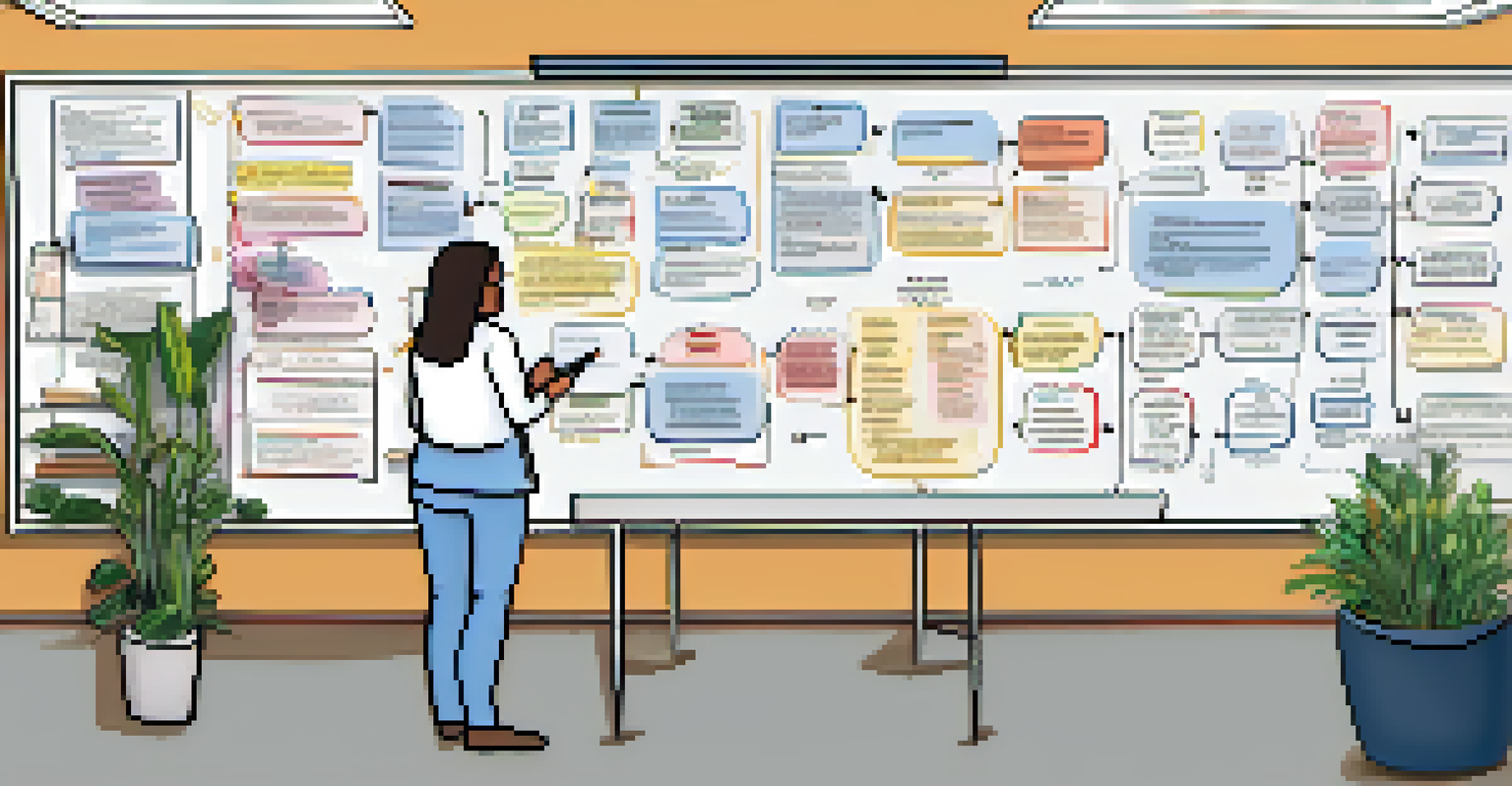How to Handle Inspection Feedback and Recommendations

Understanding the Importance of Inspection Feedback
Inspection feedback is a crucial component of maintaining quality and compliance in any organization. It serves as a guide to help you identify areas that need improvement, ensuring that you meet industry standards. Think of it as a map that highlights the bumps in the road, allowing you to navigate more smoothly moving forward.
Feedback is the breakfast of champions.
When you receive feedback, it's essential to view it as an opportunity rather than a setback. This constructive criticism can lead to better practices, enhanced safety, and ultimately, a more efficient operation. By embracing this mindset, you can transform what feels like a burden into a valuable tool for growth.
Moreover, addressing feedback promptly shows your commitment to quality and accountability. It builds trust with stakeholders, employees, and clients alike. Just like a gardener tending to their plants, nurturing these recommendations can lead to flourishing results.
Taking a Step Back: Analyze the Feedback
Once you've received the inspection feedback, the first step is to take a moment to analyze it carefully. Rushing to conclusions can lead to misunderstandings and ineffective solutions. Approach the feedback like a detective, piecing together clues to understand the full picture of what needs addressing.

Break down the feedback into manageable parts. Identify which areas are urgent and which can be improved over time. This prioritization will help you allocate resources effectively and create a clear action plan. Remember, not all feedback is created equal; some issues may pose more significant risks than others.
Embrace Feedback for Growth
Viewing inspection feedback as an opportunity can transform challenges into valuable tools for improvement.
Don't hesitate to involve your team in this analysis. Multiple perspectives can help you uncover insights you may have missed. Collaboration fosters a sense of ownership, making it easier to tackle the recommendations together.
Creating an Action Plan for Implementation
After analyzing the feedback, it's time to develop an action plan that outlines how you'll address the recommendations. This plan should be specific, measurable, achievable, relevant, and time-bound (SMART). By setting clear objectives, you can track progress and make adjustments as needed.
What is the shortest word in the English language that contains the letters: abcdef? Answer: Feedback. That’s the breakfast of champions. It’s the key to success.
Identify the resources you'll require, whether it be additional training for staff, new equipment, or changes in processes. This foresight will help you avoid roadblocks down the line. Think of it as building a bridge: you need the right materials and a solid design to cross the river successfully.
Set deadlines for each task to create a sense of urgency and accountability. Share this plan with your team to ensure everyone is on the same page. Open communication fosters a culture of transparency, allowing for smoother collaboration.
Communicating with Your Team About Feedback
Effective communication is key when addressing inspection feedback with your team. Start by sharing the feedback openly, explaining its significance and the potential impact on operations. This transparency encourages a culture where feedback is welcomed rather than feared.
Encourage dialogue by asking for your team's input on the feedback. Their insights may uncover additional areas for improvement or innovative solutions you hadn't considered. This collaborative approach not only enhances buy-in but also boosts morale, as team members feel valued and heard.
Involve Your Team in Analysis
Collaborating with your team to analyze feedback fosters ownership and uncovers insights that may have been overlooked.
Remember to celebrate small wins along the way. Recognizing progress fosters motivation and reinforces the idea that the feedback is a stepping stone to success, rather than a daunting task.
Implementing Changes: Putting the Plan into Action
With your action plan in hand and your team informed, it’s time to implement the changes. Start small by testing new processes or procedures on a trial basis. This allows you to identify any unforeseen challenges without overwhelming your team.
Monitor the implementation closely, gathering feedback from team members about how the changes are working. This real-time feedback is invaluable; it helps you understand what’s functioning well and what needs further adjustment. Think of it like tuning a musical instrument—sometimes, it takes a bit of tweaking to get the right sound.
As you implement, be flexible and willing to adapt your approach as needed. Continuous improvement is the name of the game, and being open to change will lead to better outcomes.
Monitoring Progress and Measuring Success
Once changes are implemented, it's essential to monitor progress regularly. Set up key performance indicators (KPIs) to measure the effectiveness of the adjustments made in response to the inspection feedback. These metrics serve as your compass, guiding you in the right direction.
Regular check-ins with your team can help keep everyone focused and engaged. Discuss what’s working, what isn’t, and any new challenges that may arise. This ongoing dialogue ensures that the feedback loop remains active, fostering a culture of continuous improvement.
Monitor Progress and Celebrate Wins
Regularly tracking progress and celebrating milestones reinforces the importance of feedback and motivates continuous improvement.
Celebrating milestones along the way reinforces the value of the feedback process. Recognizing achievements not only boosts morale but also highlights the importance of adapting based on insights received.
Reflecting and Learning: The Final Step
After all the hard work, take some time to reflect on the entire process. What did you learn from the feedback? How did your team handle the changes? Reflection is like looking in a mirror; it helps you see both strengths and areas for further improvement.
Document the insights gained during this journey. Creating a record of what worked and what didn’t serves as a valuable resource for future inspections. This knowledge becomes part of your organizational memory, helping you to navigate similar situations more effectively in the future.

Lastly, foster an environment where feedback is an ongoing conversation. Encourage your team to continuously seek ways to improve, turning feedback into a regular part of your organizational culture.